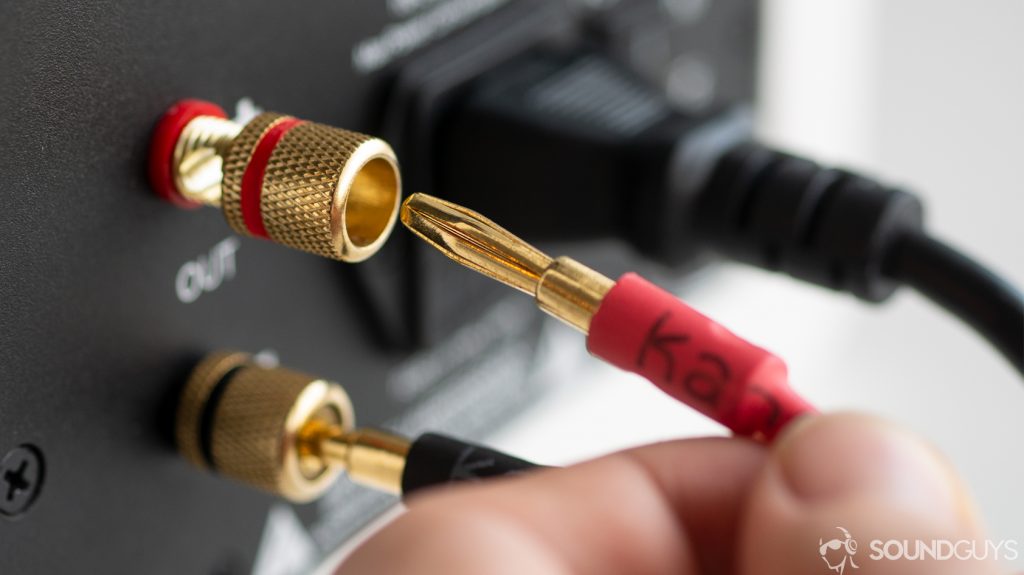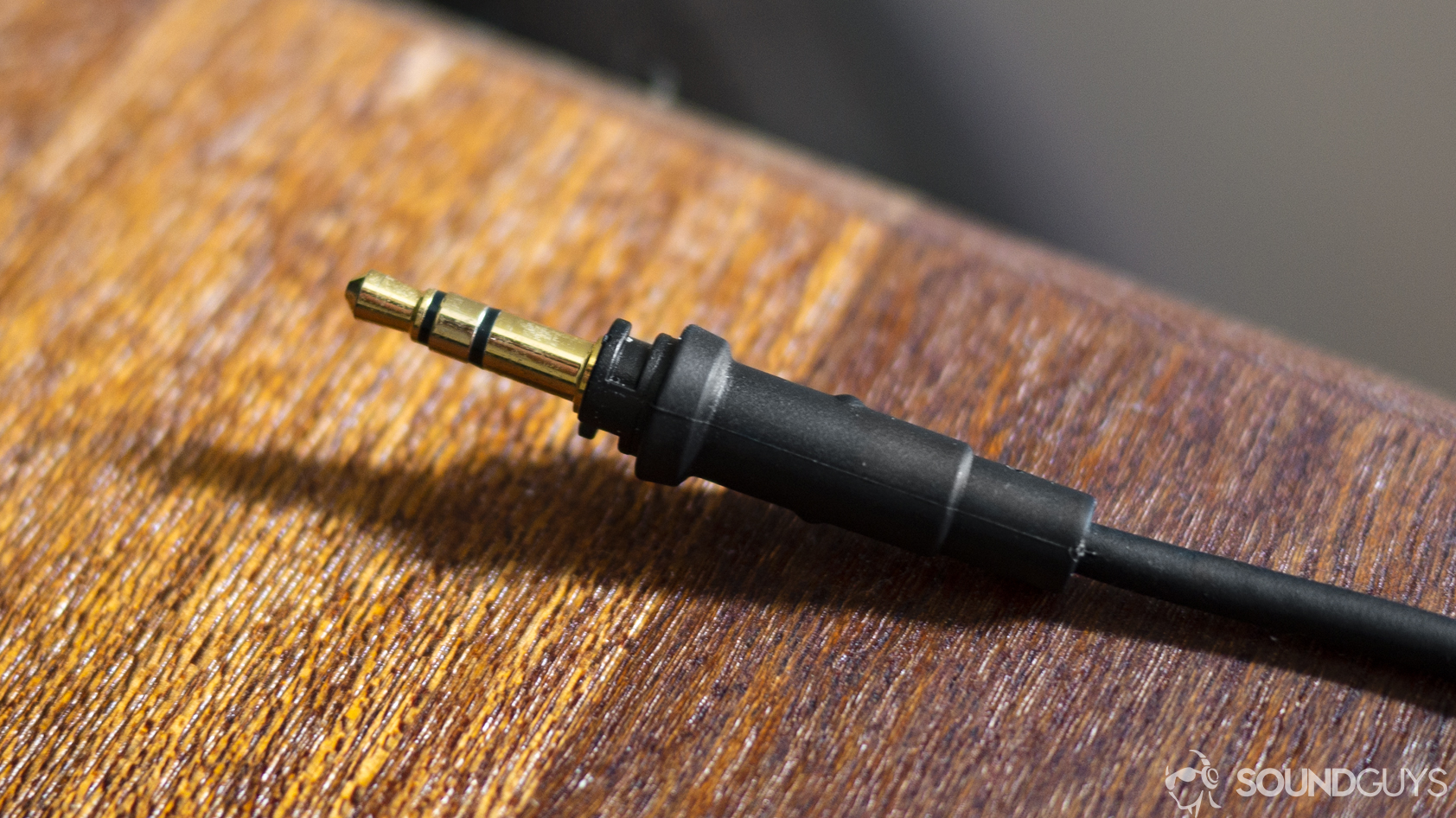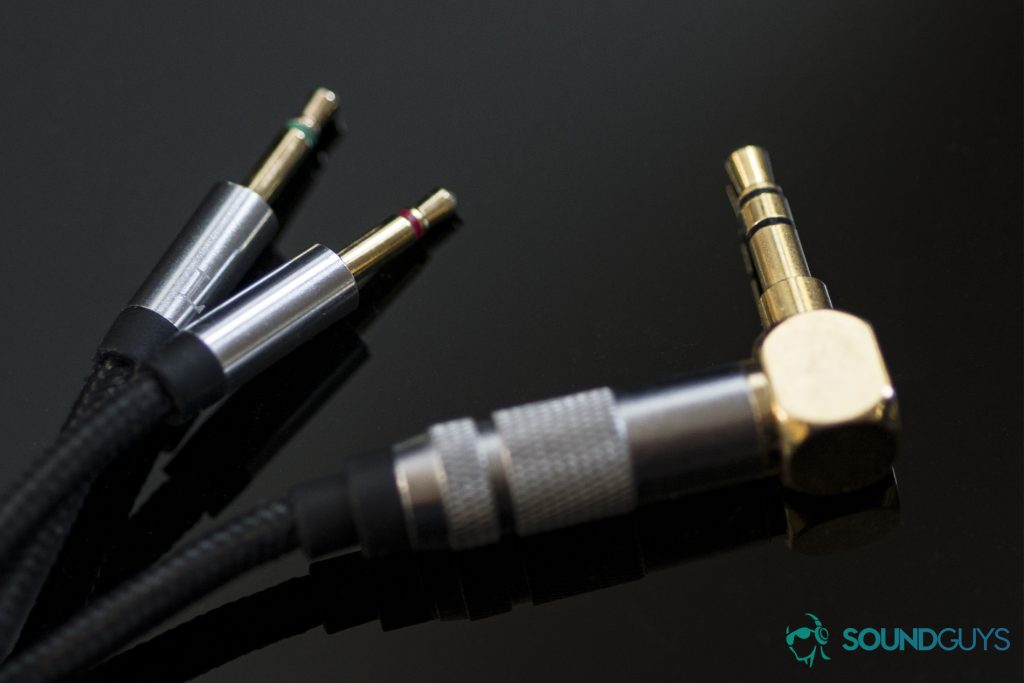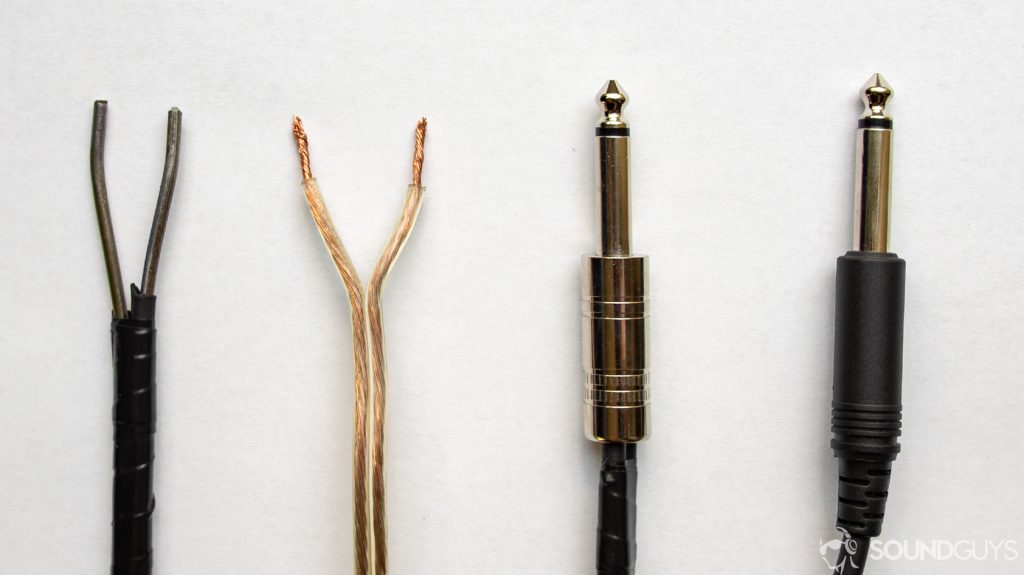What Is the Best 3.5 Mm Audio Cable
You've just bought a swanky new pair of expensive headphones or speakers, but how to make the most of them? Various guides and conventional audiophile "wisdom" might point you down the road of improving the rest of your setup, right down to the cables and wires that connect things together. You might also find quite a few audiophiles who advocate for splashing hundreds of dollars on cables to get the most out of your fancy new setup.
But before you even begin down this path, you need to look at the specifics of your setup. Most importantly, is your cable carrying a signal to an active or passive component? Speaker wires that need to carry power from an amplifier need to be selected a little more carefully than a short "aux" cable for your car.
Editor's note: this article was updated on May 18, 2021, to clarify points about the "skin effect."
What doesn't matter for cable quality?

Are your cables able to carry enough current? Yes, probably.
Let's begin with what to avoid—gold is always a good myth to start with. All expensive audio cables on the market and even the cheaper ones will often make a big deal out of "gold plating" this and that. The reason for this has nothing to do with signal quality, as any metallurgists will tell you that copper and silver are far better conductors. Furthermore, the inner part of the cable will almost always be copper for that exact reason.
Start here: Ultimate guide to audio connections
Copper oxidizes in the air, which would require constant cleaning or cables wouldn't last very long. Gold or zinc plating doesn't tarnish and ensures a longer life. However, you'll find that even cheap cables have some form of coating that will last the cable's lifetime. Gold-plating is definitely not worth the extra cost.

The venerable 3.5mm TRS plug, carrier of current.
Another common sales pitch is the need for special shielding or insulation to prevent electromagnetic interference, crosstalk, or noise from other sources. Electromagnetic radiation can actually be a problem in some situations: for very low signal levels, or when dealing with very high-speed digital data. It won't be an issue over the short distance from your pocket to your headphones, or from an amplifier to the speaker.
Learn more: The coathanger cable experiment
The "skin effect" is another common cable myth and you should steer clear of any cable companies that claim their bits of wire fix this apparent problem. The skin effect has practical consequences in the analysis and design of radio-frequency and microwave circuits, and antennas, but does not occur to any meaningful extent at audio signal frequencies so is of no real concern in our application.
This really should go without saying, but brand names do not have any influence on the laws of physics. Do not pay more for brand names.
What to look for in the best audiophile cables?

The 3.5mm plug is the standard for portable audio
Low impedance is the key factor of a good quality audio cable, particularly when it comes to speakers and low impedance headphones. Signal loss and filtering can occur if your cable offers a lot of electronic resistance, and particularly when that resistance changes with frequency (impedance). This is usually the case with speakers and headphone drivers.
I won't bore you with the physics, but essentially a higher source impedance (driver output + wire) reduces the amount of power that reaches the headphones or speakers. Furthermore, speakers and headphone drivers are reactive loads, which means their resistances vary with frequency. As an example, a pair of headphones might have a higher impedance at high frequencies, which would produce an additional loss if you added a high impedance cable in series.
Should you buy expensive audiophile cables?

Even modest materials (like a coathanger) can transmit an audio signal.
Ultimately, all you need from a good quality speaker cable is low resistance, capacitance, and inductance. That's quite simple for manufacturers to produce without any unnecessary alchemy. If you know where to look, you can find inexpensive cables with the desired basic specifications listed.
If not, you can follow the general rule of thumb that 12 or 14 gauge speaker wire is needed for long wire runs with low-impedance speakers (4 or 6Ω). Meanwhile, 16 gauge wire is fine for runs under 50 feet to 8Ω speakers. For headphones and short connections to active speakers, essentially any cable will do as the power transfer is much lower.
Great-sounding audio cables don't have to be expensive. If you're after decent audio cables or wire that won't break the bank, here are a few suggestions:
- Speaker wire: MaxBrite 50ft, 16 gauge pure copper – $15
- RCA to 3.5mm adapter: Rankie 6ft / 1.8m – $6
- AUX (male to male): Anker 4ft / 1.2m – $5
- AUX extender (male to female): Knips 4ft / 1.2m – $5
Next: What you think you know about bit-depth is probably wrong
Frequently Asked Questions
I've got several cables with very similar resistance, capacitance and inductance figures sounding distinctly different in short runs of cable.
Then there is something wrong with some of your cables—or the interconnects. Make sure the connections are secure and unbroken.
You may also like
Beyerdynamic DT 880 PRO Review
May 17, 2020
Monoprice Monolith M1060 review
February 22, 2019 2 comments
What Is the Best 3.5 Mm Audio Cable
Source: https://www.soundguys.com/best-audiophile-cables-21871/